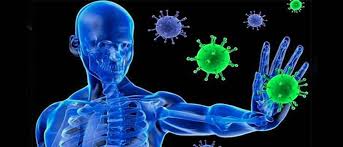
The immuno-stimulatory activity of Manuka Honey
When there is infection or injury anywhere in the body the white blood cells, called leukocytes, become active to fight the
infection and produce messenger molecules (cytokines and growth factors) to activate cells into growing to repair damaged
tissue.
Sometimes the response to infection is stronger than at other times, so infection is not always cleared up efficiently.
Sometimes the activation of growth of tissue cells to repair injury does not occur as well as at other times. Slow recovery
from injury, and even completely non-healing wounds, can be the result of this.
Studies have shown that honey has a stimulatory effect on the immune response. This may well be an important factor in the
stimulation of wound healing that is seen when honey is used as a wound dressing. (See “The role of honey in the
management of wounds” which can be downloaded free of charge from the University of Waikato’s ‘Research Commons’:
http://researchcommons.waikato.ac.nz/handle/10289/2041.) It has been proposed that honey be used in place of expensive
recombinant growth factors to stimulate the healing of wounds.1
Some of the research findings have come from testing the effect of honey on leukocytes cultured in the laboratory. Honey
has been found to stimulate the multiplication of human lymphocytes in culture2
. With human monocytes in culture it has
been found that honey stimulates the production of cytokines3, 4 and stimulates the production of Reactive Oxygen Species
which are involved in leukocytes destroying bacteria4
. Honey has also been found to stimulate human monocytes to increase
their production of prostaglandin E2, another messenger molecule involved in the immune response5
.
There is also evidence that honey stimulates the immune system in the body as well as in leukocytes in laboratory culture. A
study with mice showed that injection of honey caused the formation of leukocytes with a potent killing action on malignant
tumour cells6
. Honey given to mice in their food was found to improve the production of antibodies when the mice were
vaccinated7
. In a trial with patients receiving chemotherapy for cancer, where a serious side-effect of the treatment is
depletion of leukocytes needed to fight infection, consumption of honey prevented this depletion8
.
In the research where honey was found to activate the killing of tumour cells it was a small molecule in the honey that was
found to be responsible for this activity6
. For the stimulation of production of cytokines by leukocytes it has been found that
peptides and proteins in honey are responsible9, 10, 11. Differences between different types of honey in the amount of
stimulation they give have been found3
. The major protein in honey, which is also the major protein in royal jelly, has been
found to be involved 10, 11, 12. Injection of mice with royal jelly protein has been found to stimulate the production of
antibodies and the multiplication of immunocompetent cells13.
Some of the cytokines produced in response to stimulation by honey function to activate the production of cell growth
factors by other cells3
. This was proposed to be the mechanism by which honey stimulates tissue repair in the healing of
wounds. It has also been shown that honey has a direct stimulating action on the growth of cells. It has been found that
honey added to cell culture media increases the growth of osteoblast and fibroblast cells14, cells which repair bone and form
scar tissue. It also has been found to stimulate keratinocytes which replace damaged skin10, and to stimulate the growth of
new blood vessels15.
In experiments on wound healing in laboratory rats it was found that honey improved the rate of healing16, 17 and the rate of
formation of scar tissue, its strength, and the formation of skin cover18, 19. In all cases in these experiments with rats the
honey was more effective when given by mouth or by injection than when it was applied to the surface of the wounds. This
Downloaded from the Honey Research pages on the University of Waikato website: http://bio.waikato.ac.nz/honey
© Peter Molan 2012 Page 2 of 2
http://waikato.academia.edu/PeterMolan
